Differential grasshopper populations are heavily feeding on corn, soybeans and unharvested grass fields and waterways in Salem County. Damage is being observed above economic threshold in mutiple fields across the county where the broods are congregating. Reports from producers indicate the brood population was not this bad in 2020 and may be an indication this is but the first year of a two-year peaking cycle. A similar explosion was reported in August of 2008 http://bugoftheweek.com/blog/2012/12/21/grasshoppers-hit-the-beach-differential-grasshopper-melanoplus-differentialis
Producers should document where grasshoppers are mating and laying eggs in anticipation of a high hatch event occurring again in 2022.
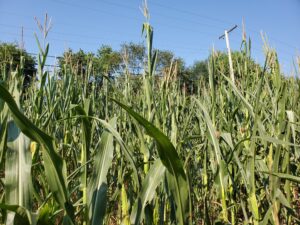
Droughty corn with extensive grasshopper feeding
In drought stressed silking corn, grasshopper feeding has damaged ear stalks where they attach to the main stalk and in some instances terminated further development. If these fields are harvested as silage they should be tested for nitrate levels due to the likelyhood the crop did not have time to utilize the nitrogen to grain fill.
Drought stressed fields harvested for feed grain should be tested for mycotoxins.
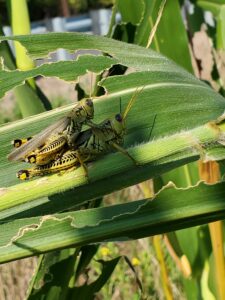
Differential grasshoppers along with two-striped and lesser migratory species lay eggs throughout the summer season.
Egg laying may extend into November if conditions are favorable.
Each female grasshopper can lay as many as 400 eggs.

Swarming grasshoppers on a farm bench near defoliated soybeans

Grasshopper nymphs have been feeding on crops in Salem County since late May. Their are now two populations feeding in crops. An adult breeding population and a new set of instar nymphs.
“Treatment of soybean may be necessary at 40% or more defoliation before soybean flowering, 15% from flowering to pod fill, and 25% from pod fill to harvest. Treatment of field margins for grasshoppers may be advisable if an average of 15 nymphs or 8 adults per square yard (90 cm square) are observed. For pod feeding, treatment may be necessary when approximately 10% of the pods are being damaged and grasshoppers are still present” – https://extension.entm.purdue.edu/fieldcropsipm/insects/soybean-grasshopper.php
Tillage after egg-laying occurs and before the spring hatch destroys grasshopper eggs.
Mowing and harvesting of crops during the non-flight stage destroys grasshopper nymphs.
Contact and systemic insecticides kill grasshoppers in the crop.
Wet and cool weather can introduce naturally occurring fungal pathogens that reduce populations.

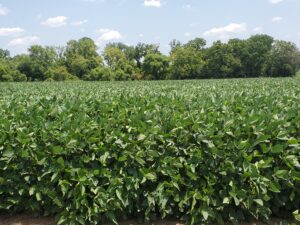 If you can tolerate the smell and feel of corn pollen on your eyelashes, put on a rain coat and go for a walk through your crop to see how the interior of the field is fairing this season. Remember as hay comes off and soybeans are sprayed, the bugs are seeking haven in corn.
If you can tolerate the smell and feel of corn pollen on your eyelashes, put on a rain coat and go for a walk through your crop to see how the interior of the field is fairing this season. Remember as hay comes off and soybeans are sprayed, the bugs are seeking haven in corn.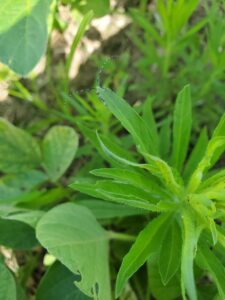
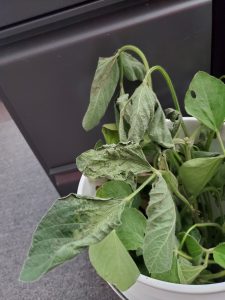 If irrigating pay particular attention for signs of salt buildup.
If irrigating pay particular attention for signs of salt buildup. 